SPOILERS, SPOILERS EVERYWHERE!
I really LOVE this show…or more specifically, the current season of this show. STAR TREK: PICARD is now halfway done with its second season, and I thought that episode 5, “Fly Me To The Moon” was one of its best offerings yet…although they all have been excellent, in my opinion.
Why was it so good? Several reasons. And if you’re wondering when I’m going to pay off that blog title above, you can either skip down to the bottom of this blog or else just enjoy the journey of getting there. I’m going to enjoy the journey.
MEET THE NEWCOMERS…
The first reason I thought this episode was so strong is because of the main challenge it had to overcome, and which I believe it did very effectively: introduce four completely new characters AND make us care about them…
Supervisor Tallinn – This Laris-look-a-like (technically introduced in the previous episode) was actually the least developed new character of the four, but she’s still intriguing. She is now officially from the same organization as Gary Seven from the TOS episode “Assignment: Earth,” and that was just fun from a fanboy standpoint, as it’s nice to see CBS Studios do a tie-in with TOS continuity that doesn’t mess around with canon and, in fact, actually honors it. Tallinn wasn’t developed much as a character this episode on purpose, methinks, in order to 1) let us get to know and care about the other new characters first, and 2) give Tallinn her own episode or episodes to develop a little bit more later.
Adam Soong – BRENT SPINER returns to play yet another Soong ancestor! This is the 7th character Spiner has played in that “family,” the others being Data, Lore, B-4, Noonian, Arik, and Altan Inigo. My suspicion is that we will discover that this earliest Soong, a geneticist, will inject his daughter Kore with something that will make future Soong offspring all resemble him, but we’ll see. Either way, Brent has given us a new character, similar to other Soongs but different enough to be fresh and intriguing. While Adam is arrogant (a Soong staple!), he also deeply and truly loves his daughter…and we feel that love.
Kore Soong – This explains why ISA BRIONES has been missing for the first half of this season—they’ve been saving her to play Adam Soong’s daughter. And this “girl-in-a-bubble” is so pure and filled with hope and light that she’s almost impossible not to care about and root for.
Renée Picard – I have to admit that when I first heard Jean-Luc Picard mention his ancestor, I imagined René Picard (no extra “e”), a male like his since-departed nephew by the same name. So I was surprised (pleasantly) to discover that the attractive young woman whom we saw reading a Dixon Hill novel while Q watched and waxed poetic last episode was indeed Picard’s ancestor and destined for a great achievement in space exploration. But even more unexpected was the revelation that Renée suffers from depression. In a day and age when Star Trek is showing us many kinds of previously “invisible” people of different gender identities and sexual orientations, the decision to feature someone prominent to the story suffering from (and overcoming?) the debilitating effects of depression is a bold move. And seeing Renée with Q as her therapist trying to sneakily manipulate her into quitting the program (and changing history) made me want to root for her even more.
AND SPEAKING OF Q…
JOHN de LANCIE just nails it every time, doesn’t he? But this was actually the first episode to feature significant amount of Q since episode 2. In other words, bravo to the writers for resisting the temptation to over-Q this season and keep the previous two episodes almost completely Q-less. This allowed Q’s extended presence in this episode—as both comically-accented Freudian shrink as well as nefarious Faust to Adam Soong—to really stand out and shine.
But it isn’t just John de Lancie giving a stellar performance. Each member of the cast, this time under the veteran direction of JONATHAN FRAKES (on his 27th Star Trek directing gig!), nailed their character and each of their scenes. Indeed, while I hear fans sporadically criticize this or that aspect of this series, the one complaint I almost never see on social media is the acting. Even the French police officer—whom I couldn’t understand because I took Spanish in high school—totally sold it. And did you notice LEA THOMPSON (who directed the previous two episodes) getting a little time in front of the camera as the head of the panel that revokes Adam Soong’s license and funding? Directors who also act—someone tell Frakes!
EXPOSITION AND TRANSITION IS NOT EASY TO PULL OFF!
With only ten episodes to work with, hitting the halfway point also means gearing up for the home stretch. Up until now, the episodes have been setting the table, arranging the pieces on the chess board…whatever metaphor you want to use. We’ve been given the parameters the characters have to move around in, and we know who is who. But there are still mysteries. Indeed, there are mysteries within mysteries! For example:
- What did Q change in 2024 that altered human history from that point on?
- Why did he do this?
- Is there something wrong with Q?
- How does Adam Soong, still remembered by the Confederation 380 years later, fit into all of this?
The pacing thus far has been pretty much pitch perfect. Each episode felt complete and yet ended with a great cliffhanger. The series isn’t getting so bogged down in character development and angst that the episodes grind to a halt. There’s been plenty of action, tension, drama, and suspense to keep things moving. But we’ve still been treat to just enough personal interaction to keep us invested in the characters and their relationships with each other—especially Agnes and the Borg Queen, Raffi and Seven, Rios and Dr. Teresa, and Picard and Guinan along with Picard and Laris and Picard and Tallinn.
Now we need to start answering some (not all) of those questions and begin moving these characters forward. If characters don’t develop, they stagnate and can become stale and boring to watch…especially in today’s TV environment. And so this episode had two jobs: 1) start explaining things and 2) set up the sprint to the end for these characters.
I’ve already discussed how that sprint involves the introduction of four significant new characters. So this episode had some ‘splaning to do. And that means EXPOSITION, which runs the huge risk of telling and not showing…which can be B-O-R-I-N-G.
But in the case of Supervisor Tallinn and Renée Picard, there seemed to be no other option. The episode had to explain to the viewers who Tallinn is and why she does what she does (which is to protect Renée)…and this explanation had to work for fans who had never seen “Assignment: Earth” and had no idea who Gary Seven was. They also had to explain who Renée Picard was, why she was so important, and therefore, why it was critical that she go to Europa. And in doing that, we answer the first question above, as we see Q (as her psychologist) trying to convince Renée to throw in the towel. We still don’t know the “why” (gotta keep some mysteries for later!), but at least we now know the “what.” Progress!
But all of the above happens in Supervisor Tallinn’s apartment/office, sitting down, talking. (Honestly, most of SIR PATRICK STEWART’s scenes in this series take place where not a lot of moving is required because the man is 80 years old, for goodness sakes!) However, sitting and talking and explaining plot elements for long periods of time can bog down an episode in minutiae and make viewers’ eyes glaze over…just ask the folks doing DISCOVERY (where I am repeatedly complaining about expositional telling rather than showing).
So why aren’t I complaining about Picard and Tallinn simply talking to each other for 10% of the entire episode (nearly 4 minutes our of 40 minutes)? Because of the way it was executed. Yes, Jonathan Frakes couldn’t avoid the necessary telling of the exposition, but he combined and intercut that with SHOWING, as well.
More specifically, during the pre-credits teaser, scenes of Picard and Tallinn’s initial discussion introducing themselves intercuts repeatedly to scenes of a female astronaut in an emergency situation. Who is this woman? Where is she? Back to Picard and Tallinn. Back to the emergency–is that a patch of the French flag in her shoulder? Back to Picard and Tallinn. Back to the astronaut, who we discover has just failed a simulation and is not happy about it. Back to Picard and Tallinn, as Picard reveals his mission. Back to the astronaut, but it’s a voice-over. Showing AND telling simultaneously? Yes! Picard has shared his name, and Tallinn reveals that the person she is assigned to watch over and protect is his ancestor. And this is when they SHOW us the name on the patch, and we now understand why we’ve seen these unexplained intercuts with the astronaut…
Brilliantly done! What could have been and intro filled with boring exposition was, instead, engaging and intriguing. Then, following a brief-but-chilling cut to the Borg Queen gaining access to a phone line to call the French police and ask for help at the Picard vineyard, followed by the completion of the rescue of Rios, we return Picard and Tallinn.
This time, there’s a bit more discussion about Renée herself, but now the cuts are to a much quieter scene of her looking sad and pensive, sitting in a therapist’s office. Oddly, though, the music doesn’t fit the quiet of the scene. The score has turned fast and urgent. Something is wrong with this, but what? Then the music shifts back to pleasant as Tallinn talks about Renée’s childhood. In fact, I’m going to shift from telling you about the scene to showing you (show, don’t tell!) because the musical cues (or Q’s) in this scene are brilliant! Watch (and listen to) what is 3 minutes and 42 seconds of almost non-stop exposition that feels like anything but, and pay careful attention to how the MUSIC becomes a critical tool to guide your emotions…
Frakes is such a natural director that he makes putting together a sequence like that (and the previous one) seem almost like child’s play. But trust me, it’s art and skill and instinct coming together masterfully to take a whole bunch long exposition required to move the plot forward feel instead like a natural part of the story. I don’t mean to put ST: Discovery down by comparison, but I have been been craving this sort of finesse on that other series for four seasons now. Picard has it after only a season and a half.
MIXING GENRES IN MIDSTREAM
Speaking of directorial ability, most episodes of any Star Trek tend to be one or at most two “kinds” of stories: action, introspection, comedy, tragedy, suspense, horror, etc. This episode has multiple tones, and it masterfully toggles among them to keep things interesting in a very unique way.
I’ve already discussed the quiet “talky” scenes with Picard and Tallinn intercutting with Renée’s training simulation followed by her therapy session. And then there was the cut to the Borg Queen and the ominous “Oh, this can’t be good!” moment when she connects to the local police. Then there was the sequence rescuing Rios. That was 100% action/adventure, with Rios getting to smack down the “evil” ICE Agent and Seven and Raffi freeing Rios and all his friends.
Now granted, the whole Rios injured/captured/rescued plotline turned out to be little more than a side-story, providing convenient cutaways during these last three episodes. Ultimately, he, Seven, and Raffi fail in their main mission to find the Watcher in Los Angeles, and Picard completes that task. So all the Rios story did was give the audience a little variety in each episode, including flirting with Dr. Teresa, some social commentary on illegal immigrants, a car chase, and the rescue this episode. On the other hand, the Chekov sequence of captured/injured/rescued in Star Trek IV was pretty much the same thing done essentially for the same reasons (just replace illegal immigrants with Cold War) to give the film a couple of fun action/chase/rescue sequences.
Back to the rest of the episode. The Rios rescue ends with Raffi seeing Elnor when he isn’t really there. That sets us up for some character development for her, but this is only the first hint of it, and so it’s purposefully brief. We then transition into two completely unrelated genres, as we watch the wealthy and arrogant scientist do everything he can to save the daughter he loves. This kind of story is a dark tragedy as this tortured father makes a deal with the devil and will likely pay the price down the road.
Meanwhile, back in the Bourgogne region of France, things don’t go well for the French police officer as we shift to classic monster-in-the-house horror. But of course, it’s really a battle of wills between Agnes and the Borg Queen. So who here thinks the Borg Queen wanted Agnes to pull the trigger? After all, now the Borg Queen is “all-in”…meaning inside of Agnes. (“If you strike me down, I shall become more powerful than you can possibly imagine.”) Either way, it was a chilling sequence intercut with Soong and Q’s totally different genre.
And speaking of all-in, how about that transition from horror to Ocean’s Eleven? The classic team-gets-inside-the-party-with-confidence-and-style has been done to death in movies, TV, and even on Deep Space Nine (“Badda-Bing, Bada-Bang“) and Picard itself (“Stardust City Rag“). But who cares? If they do it right, it’s just plain fun to watch, and that’s what I want: to enjoy my time watching this show.
Oh, and let’s not forget a couple of fun bits of comedy relief (lest the episode get too dark and depressing) . There was this…
And then this I really loved…
THERE ARE ALWAYS POSSIBILITIES…
A final reason that I enjoyed this episode so much is illustrated by the second clip above…and not just because it’s funny. This scene encapsulates what this episode did so amazing well: give us some answers while keeping other mysteries going at maximum warp. Obviously, they are going to deal with the fact that Tallinn looks exactly like Laris but this quick scene between Picard and Raffi acknowledges that to the audience with an implied, “Be patient, we’ll get there.”
Of course, the other mysteries are just as delicious. In addition to the obvious questions surrounding Renée and whether she will go to Europa, there is still the question of why Q is doing this. Also, what is wrong with Q that his powers are disappearing, and why does an omnipotent being need a 21st century Earth geneticist to fix him? Then we have the cliffhanger question: what the heck is going on with the Borg Queen hitchhiking inside Agnes’ mind?
And now the moment you’ve all been waiting for…
GOING WHERE NO STAR TREK TIME-TRAVEL STORY HAS GONE BEFORE…
Actually, let me be a teensy bit more specific. There have been many, MANY Star Trek time-travel episodes and movies. But I want to limit myself to the ones where the crew travels back to old Earth…either our past or present:
“Tomorrow Is Yesterday” (TOS)
“The City on the Edge of Forever” (TOS)
“Assignment: Earth” (TOS)
Star Trek IV: The Voyage Home
“Time’s Arrow, Part II” (TNG)
Star Trek: First Contact
“Past Tense” (DS9)
“Little Green Men” (DS9)
“Future’s End” (Voyager)
“Carpenter Street” (Enterprise)
A few weeks ago, I wrote a blog pointing out that each of these episodes and movies shared nearly all of the same story elements. This week I realized that I left one out: there is nearly always someone involved who is critical to the course of human history.
In “Tomorrow Is Yesterday,” Captain John Christopher’s unborn son, Colonel Sean Jeffrey Christopher, will grow up to lead the first Earth-Saturn probe. Star Trek VI: The Voyage Home introduces us to the man who “invented” transparent aluminum—no, not Pr. Scott but rather Dr. Nichols of Plexicorp. Star Trek: First Contact features a story where the crew must help make certain that Zefram Cochrane launches the Phoenix and makes Earth’s first warp journey, getting them noticed by the Vulcans. In “Past Tense,” Ben Sisko has to assume the identity of Gabriel Bell, who led the Bell Riots in San Francisco that led to true change in the way society treated the problems of homelessness on Earth. And finally, in “Future’s End,” Henry Starling ushered in Earth’s digital age thanks to technology he recovered from a crashed timeship from the future. We also meet famous author Samuel Clemens, a.k.a. Mark Twain in “Time’s Arrow.”
What do all of these world-changers have in common—an astronaut, a factory owner, an inventor, a homeless person, an industrialist, and an author? Think for a moment.
Give up?
They were all men. Those who change the world for the better in Star Trek and are usually remembered for it share a Y-chromosome. The only woman who changed the world, Edith Keeler, sadly changed it for the worse, and she had to die in order to save the future. Ultimately, she would not be remembered.
Other woman encountered in the past by our heroes would also not be remembered by history—like marine biologist Gillian Taylor, Cochrane’s assistant Lily Sloane, and scientist Rain Robinson. At best, there’s Gary Seven’s assistant Roberta Lincoln, but they function more as a team. No Earth woman, up until now, has gotten to shine for her own historical accomplishments.
Surprised? I was when I realized it. Although TOS in the 1960s was chauvinistic by today’s standards, a woman was leading a series cast by Voyager‘s debut in 1995. But I find it almost inconceivable (and yes, that word means what I think it means) that it took Star Trek nearly 56 years to give us a prominent female figure from Earth history.
And I say: it’s about TIME!!!

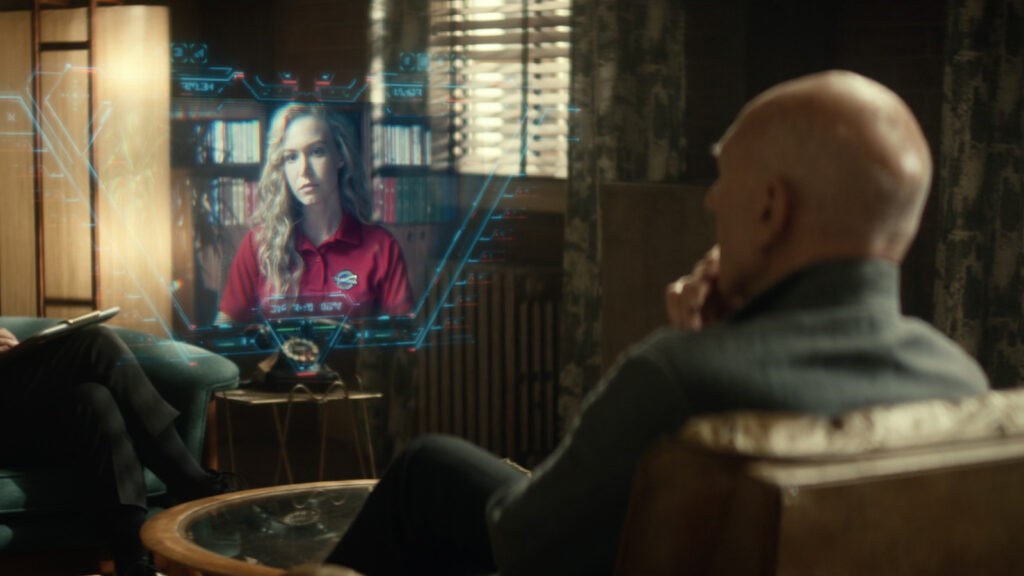
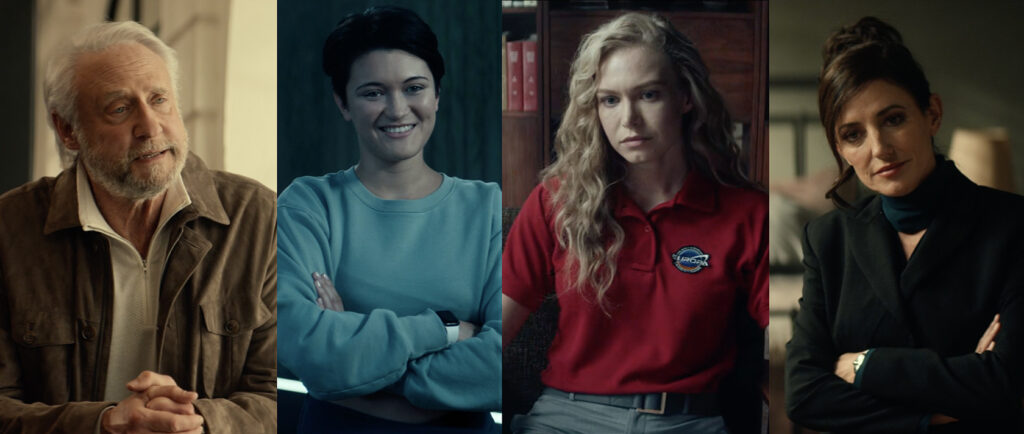
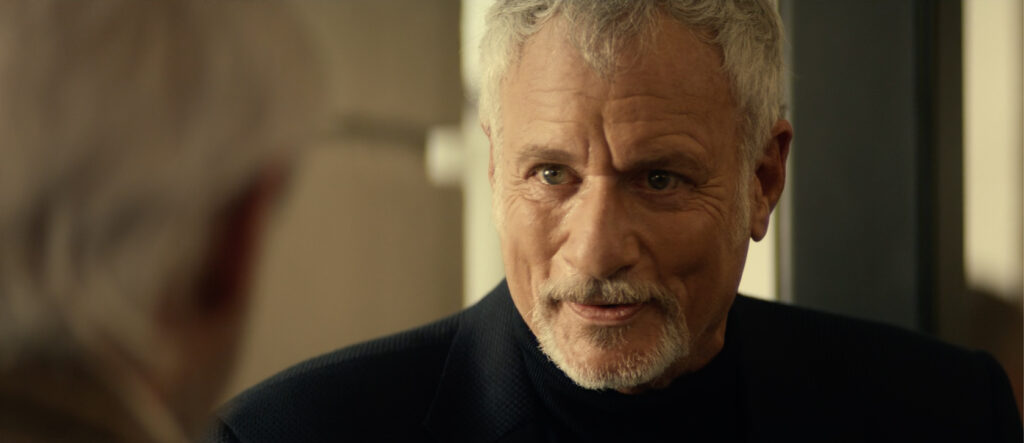
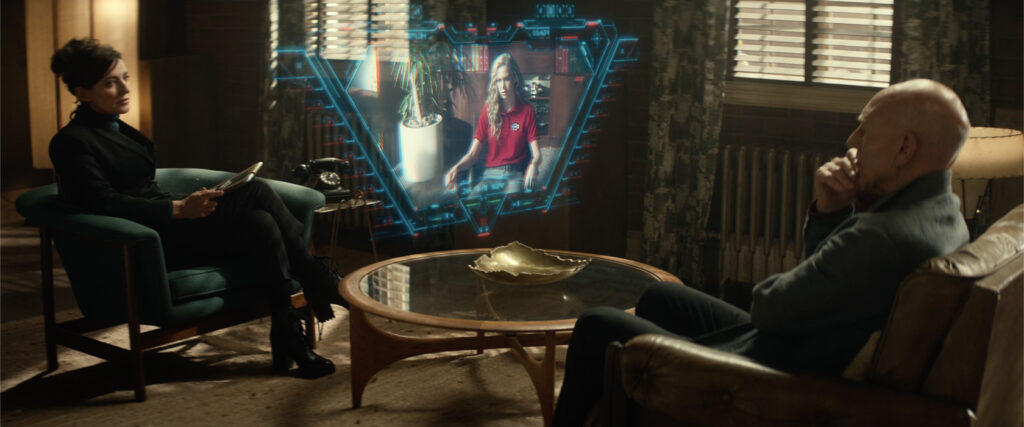
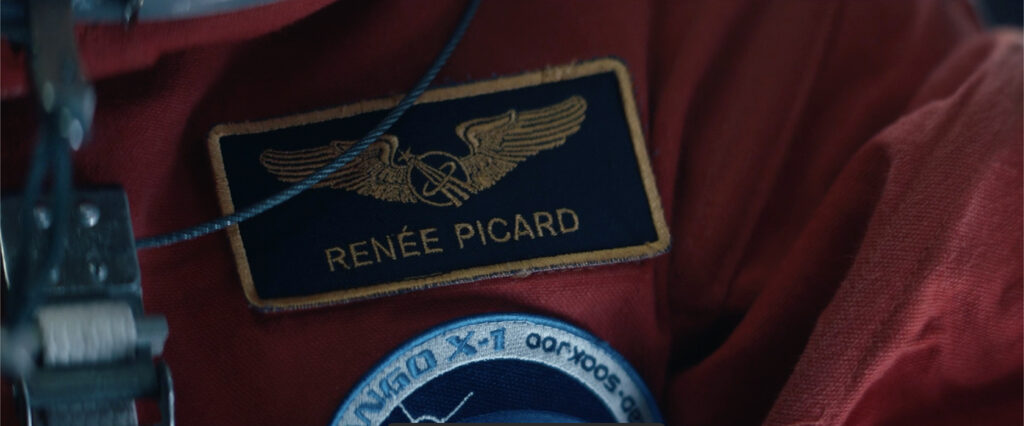
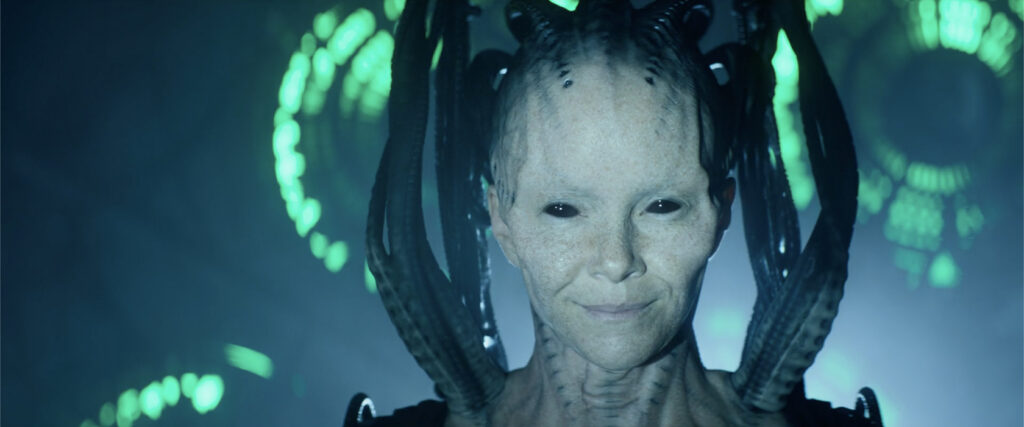
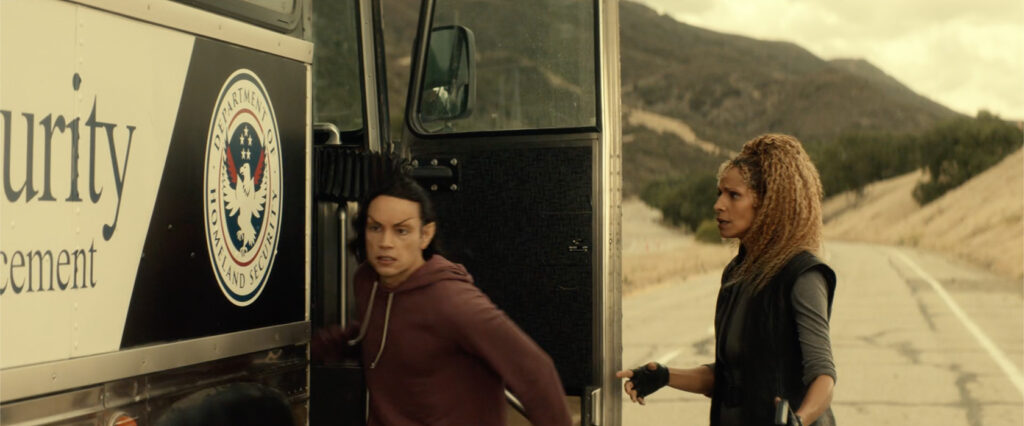
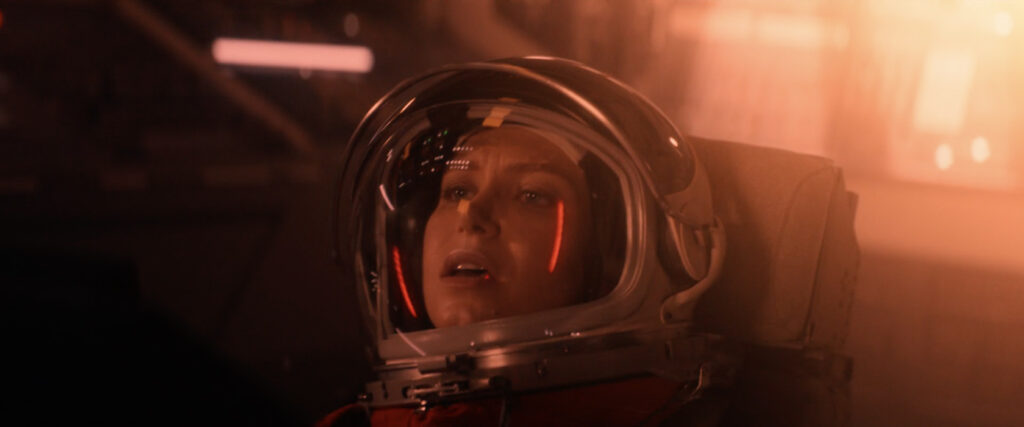
“If you strike me down, I shall become more powerful than you can possibly imagine.”
You are having entirely TOO much fun writing these blog posts.
To the episode itself, I am feeling like I’d like a little bit of resolution between episodes rather than leaving me with the feeling that the only way to watch the show really is to binge it rather than to have it stop in the middle of a scene. Most cliffhangers outside of Picard do have a distinct transition between part 1 and part 2 but these have felt like an arbitrary decision rather than a dramatic pause.
Otherwise, yes, everything you wrote I agree with.
I think the cliffhangers are a feature, not a bug, as they happen in almost every once-a-week streaming series I see these days. Ones that are binge-dropped, like “The Crown,” for example, don’t need to rely on a “tune in next week…!” ending.
But yeah, it does lead to some “Let’s wrap this up in the first minute” beginnings to the next episode…but not always. Just look at last week’s episode with Q’s flaccid snap. That plot element is taking it’s time to develop, with a few tantalizing hints this episode but not much more.
You know, this really was an excellent episode. I also found the final scene with the Borg Queen and Jurati intriguing. I’ve heard a lot of “Jurati has been assimilate” but I don’t agree. It’s more like the Queen knew her body was dying and she downloaded herself into Jurati. It’ll be quite interesting to see how this dynamic moves forward. Remember the Queen’s ability to assimilate was disabled. She must have figured a way to put her consciousness into Jurati in all the time she had to “think.”
I suspect there will literally be a battle of wills for the body of Jurati (hey, that kinda rhymes!). 🙂